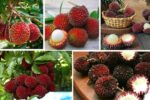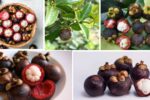Hydrangeas are one of the most beloved and visually captivating flowering shrubs found in gardens worldwide. Known for their lush foliage and voluminous, showy blooms in hues of blue, pink, purple, and white, hydrangeas add elegance and charm to any outdoor space. However, to keep these plants healthy and blooming abundantly, proper nutrition is essential — and that means knowing when and how to fertilize them effectively.
Fertilizing hydrangeas isn’t a one-size-fits-all task. The timing, type of fertilizer, and method of application can significantly affect their health, color, and flower production. In this article, we’ll explore in detail when you should fertilize your hydrangea plants, the factors influencing fertilization schedules, and practical tips for achieving those lush, vibrant blooms you desire.
Understanding Hydrangea Nutritional Needs

Hydrangeas require a balanced mix of nutrients for robust growth and flowering. The primary nutrients essential for their well-being include:
- Nitrogen (N): Promotes lush, green foliage.
- Phosphorus (P): Encourages healthy root systems and flower development.
- Potassium (K): Aids in overall plant strength, water regulation, and disease resistance.
Apart from these, hydrangeas benefit from micronutrients such as magnesium, calcium, and iron. Without the right nutrients at the appropriate time, hydrangeas may produce sparse blooms, weak stems, or discolored leaves.
Best Time to Fertilize Hydrangeas

The optimal fertilizing schedule for hydrangeas depends on their type, soil condition, and local climate. However, there are some general guidelines most gardeners can follow to ensure healthy growth and flowering.
Early Spring (Primary Feeding)
When: As new leaf buds begin to appear, typically in March to early April depending on your region.
Why:
Early spring feeding provides the essential nutrients hydrangeas need to support vigorous new growth, establish strong roots, and prepare for bud development.
What to Use:
A balanced, slow-release fertilizer such as 10-10-10 or 14-14-14, or a fertilizer formulated specifically for flowering shrubs.
Application Tip:
Apply the fertilizer evenly around the plant’s drip line (the area under the outermost leaves) and water it in thoroughly.
Mid-Spring (Secondary Feeding)
When: Around 6 to 8 weeks after the first application, usually in late April to May.
Why:
This secondary feeding encourages continued growth and helps the plant sustain itself during the active growing season.
What to Use:
You can use the same slow-release fertilizer or switch to a liquid, water-soluble option like 20-20-20 for quicker nutrient absorption.
Application Tip:
Follow package instructions carefully and avoid over-fertilizing, which can lead to excessive foliage and fewer blooms.
Mid-Summer (Optional for Certain Varieties)
When: In mid to late June, especially for repeat-blooming varieties like Endless Summer® hydrangeas.
Why:
Some modern reblooming hydrangeas benefit from a light mid-season feed to support a second wave of blooms.
What to Use:
A bloom-boosting fertilizer with a higher phosphorus content, such as 10-30-10, to encourage flower bud development.
Application Tip:
Use sparingly and avoid fertilizing too late in the season to prevent new growth that won’t have time to harden off before winter.
Avoid Fertilizing in Late Summer and Fall

It’s crucial to stop fertilizing hydrangeas by late July or early August, depending on your region. Fertilizing too late in the growing season can prompt tender new growth that won’t survive the cold winter months.
Why It Matters:
Late-season fertilizing:
- Delays the plant’s natural preparation for dormancy.
- Makes new shoots vulnerable to frost damage.
- Weakens the plant’s resilience through winter.
Tip:
Instead of fertilizing, focus on maintaining soil moisture and applying mulch to protect the roots during fall and winter.
How Often Should You Fertilize Hydrangeas?

The frequency of fertilizing hydrangeas depends on the fertilizer type:
- Slow-release granular fertilizers: Typically applied once or twice per growing season (spring and early summer).
- Liquid or water-soluble fertilizers: Can be applied every 4 to 6 weeks during the active growing season.
Important Note:
Always follow the manufacturer’s directions and avoid over-fertilizing, as it can lead to:
- Excessive leafy growth with minimal blooms.
- Nutrient imbalances.
- Soil and water contamination.
Fertilizing Different Types of Hydrangeas

Different hydrangea varieties have slightly different nutritional needs and preferences. Here’s a quick overview:
Bigleaf Hydrangeas (Hydrangea macrophylla)
- Prefer balanced or slightly phosphorus-rich fertilizers.
- Sensitive to soil pH, which affects flower color (blue in acidic soil, pink in alkaline).
- Benefit from early spring and mid-spring feedings.
Panicle Hydrangeas (Hydrangea paniculata)
- Thrive with balanced fertilizers.
- Less fussy about pH levels.
- Usually require one good spring feeding, with an optional second in early summer.
Smooth Hydrangeas (Hydrangea arborescens)
- Appreciate higher phosphorus fertilizers to encourage large, showy blooms.
- Fertilize in early spring, with an optional booster in late spring.
Oakleaf Hydrangeas (Hydrangea quercifolia)
- Prefer light feeding in early spring.
- Avoid high-nitrogen fertilizers, which encourage excessive leafy growth.
Soil pH and Fertilizer Selection
For bigleaf and mountain hydrangeas, soil pH affects not only plant health but also flower color.
- Acidic soil (pH below 6.0): Produces blue flowers.
- Alkaline soil (pH above 7.0): Produces pink flowers.
If color management is part of your hydrangea care routine:
- Use aluminum sulfate in early spring to enhance blue hues.
- Use garden lime to intensify pink shades.
Apply these soil amendments at the same time as your spring fertilizer, ensuring even application and adequate watering.
Common Fertilization Mistakes to Avoid
To get the best out of your hydrangeas, steer clear of these frequent errors:
- Over-fertilizing: Can cause lush foliage with few or no blooms.
- Fertilizing too late: Encourages tender new growth vulnerable to frost.
- Neglecting soil testing: Guessing soil nutrient levels may lead to unnecessary or imbalanced applications.
- Applying fertilizer to dry soil: Can burn plant roots. Always water before and after fertilizing.
Conclusion
Fertilizing hydrangeas is both an art and a science, and timing plays a pivotal role in achieving those iconic, full-bodied blooms. As a general rule:
- Begin feeding hydrangeas in early spring.
- Follow up in mid-spring.
- Optionally, fertilize reblooming varieties in mid-summer.
- Stop by late summer to avoid winter damage.
Choosing the right type of fertilizer, applying it correctly, and understanding your specific hydrangea variety’s needs will lead to healthier plants, prolonged flowering, and those lush, vibrant garden displays hydrangeas are famous for.
By following these guidelines, you’ll ensure your hydrangeas not only survive but thrive — providing breathtaking blooms that transform your garden year after year.





Leave A Comment